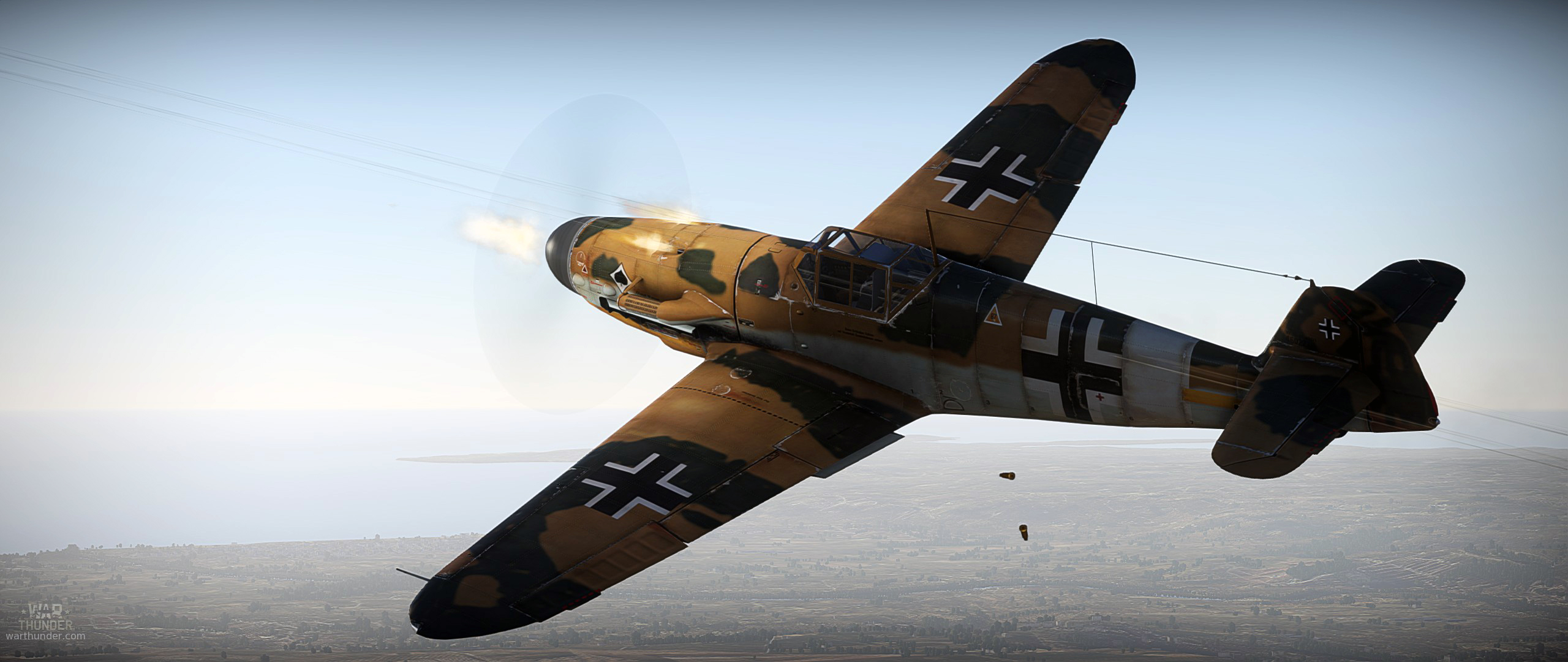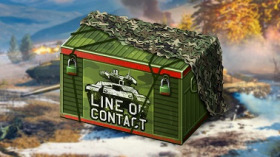
- For PC
- For MAC
- For Linux
- OS: Windows 10 (64 bit)
- Processor: Dual-Core 2.2 GHz
- Memory: 4GB
- Video Card: DirectX 11 level video card: AMD Radeon 77XX / NVIDIA GeForce GTX 660. The minimum supported resolution for the game is 720p.
- Network: Broadband Internet connection
- Hard Drive: 23.1 GB (Minimal client)
- OS: Windows 10/11 (64 bit)
- Processor: Intel Core i5 or Ryzen 5 3600 and better
- Memory: 16 GB and more
- Video Card: DirectX 11 level video card or higher and drivers: Nvidia GeForce 1060 and higher, Radeon RX 570 and higher
- Network: Broadband Internet connection
- Hard Drive: 75.9 GB (Full client)
- OS: Mac OS Big Sur 11.0 or newer
- Processor: Core i5, minimum 2.2GHz (Intel Xeon is not supported)
- Memory: 6 GB
- Video Card: Intel Iris Pro 5200 (Mac), or analog from AMD/Nvidia for Mac. Minimum supported resolution for the game is 720p with Metal support.
- Network: Broadband Internet connection
- Hard Drive: 22.1 GB (Minimal client)
- OS: Mac OS Big Sur 11.0 or newer
- Processor: Core i7 (Intel Xeon is not supported)
- Memory: 8 GB
- Video Card: Radeon Vega II or higher with Metal support.
- Network: Broadband Internet connection
- Hard Drive: 62.2 GB (Full client)
- OS: Most modern 64bit Linux distributions
- Processor: Dual-Core 2.4 GHz
- Memory: 4 GB
- Video Card: NVIDIA 660 with latest proprietary drivers (not older than 6 months) / similar AMD with latest proprietary drivers (not older than 6 months; the minimum supported resolution for the game is 720p) with Vulkan support.
- Network: Broadband Internet connection
- Hard Drive: 22.1 GB (Minimal client)
- OS: Ubuntu 20.04 64bit
- Processor: Intel Core i7
- Memory: 16 GB
- Video Card: NVIDIA 1060 with latest proprietary drivers (not older than 6 months) / similar AMD (Radeon RX 570) with latest proprietary drivers (not older than 6 months) with Vulkan support.
- Network: Broadband Internet connection
- Hard Drive: 62.2 GB (Full client)
Bf 109 G-2/Trop 6./JG 53 "Yellow 6" , Sicily, first half of 1943
camouflage unlockable for shooting down 180 enemy aircraft
After the hammering of North Africa and Tunisia, the Italians set about establishing a defensive line around the Italian peninsular. Available to this defence was some 30 Divisions, though many units were lacking training and not fit for front line service. On the island of Sicily, however, the Axis forces were deprived of much in the way of manpower and material. Though units such as the 4th "Livorno" Motorized Infantry Division (formally Mountain Division) and the 28th "Aosta" Infantry Division maintained their formidable reputations, the majority of available manpower was in coastal defence units scattered around the island at key points.
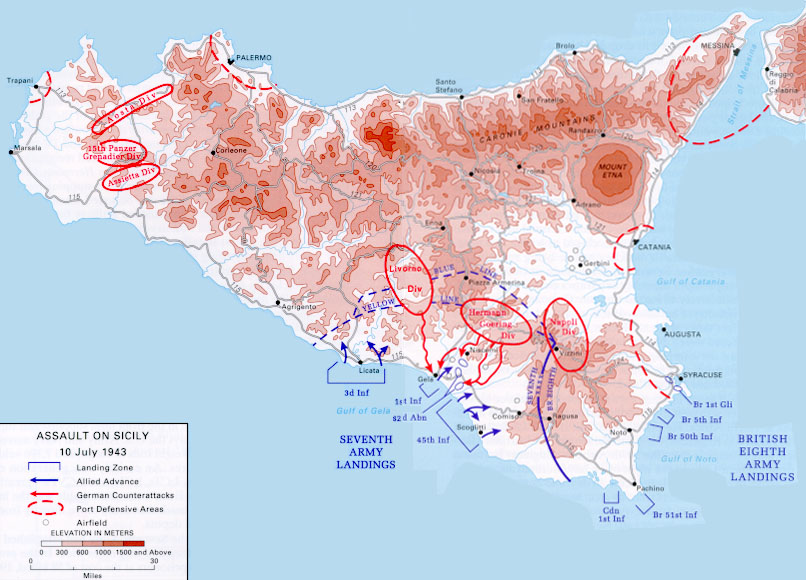 |
| Map of the Allied landings in Sicily on 10 July 1943 |
The 315,000 men in the Italian 6th Army under General Alfredo Guzzoni did have a complement of German forces lead by General Field Marshal Albert Kesselring to supplement its deficiency of veteran troops. Of the 80,000 German troops eventually available, units of the Luftwaffe’s Panzer Division Hermann Goring and the Heer 15th Panzergrenadier Division formed the hardened core of the German commitment, although many others were not front line troops, those being Luftwaffe and Heer support staff.
When the Allied landings finally took place on the night of the 9th/10th of July, the island had been harassed by allied bombers and fighter bombers, which had paid special attention to the island’s airfields, road, rail and port infrastructure. Just after midnight on the cold and windy morning of the 10th and with gusting winds, paratroopers from US and British units landed just inland of the beachheads. Many were blown off course and scattered but even these units managed to sow confusion and panic amongst the defenders so that when the amphibious landings took place the defenders were already wrong footed.
All across the landing beaches tactical air support and naval fire suppressed and obliterated the coastal defence sites, causing many casualties; the bravery of these units were not in question as they fought hard and with determination in many cases, but were hampered by a lack of training, equipment and being vastly outnumbered. They were unable to prevent the concentrated forces of the British 8th Army and the US 7th Army. The Italian forces were dispersed along incredibly long fronts, the coastal areas at the Gulf of Gela and the Gulf of Noto were each held only thinly by coastal defence forces.
As the sun rose over the town of Gela, Italian Stuka Ju-87 dive bombers descended on the landing fleet, these were followed throughout the day by SM-79 torpedo bombers and German Ju-88 bombers. Only a few P40’s were available to see off these attackers and during the attacks the panicked naval gunners fired at these aircraft by mistake. It was during these early morning attacks that the USS Maddox was sunk. Despite this, US forces landed and took the town of Gela in quick time.
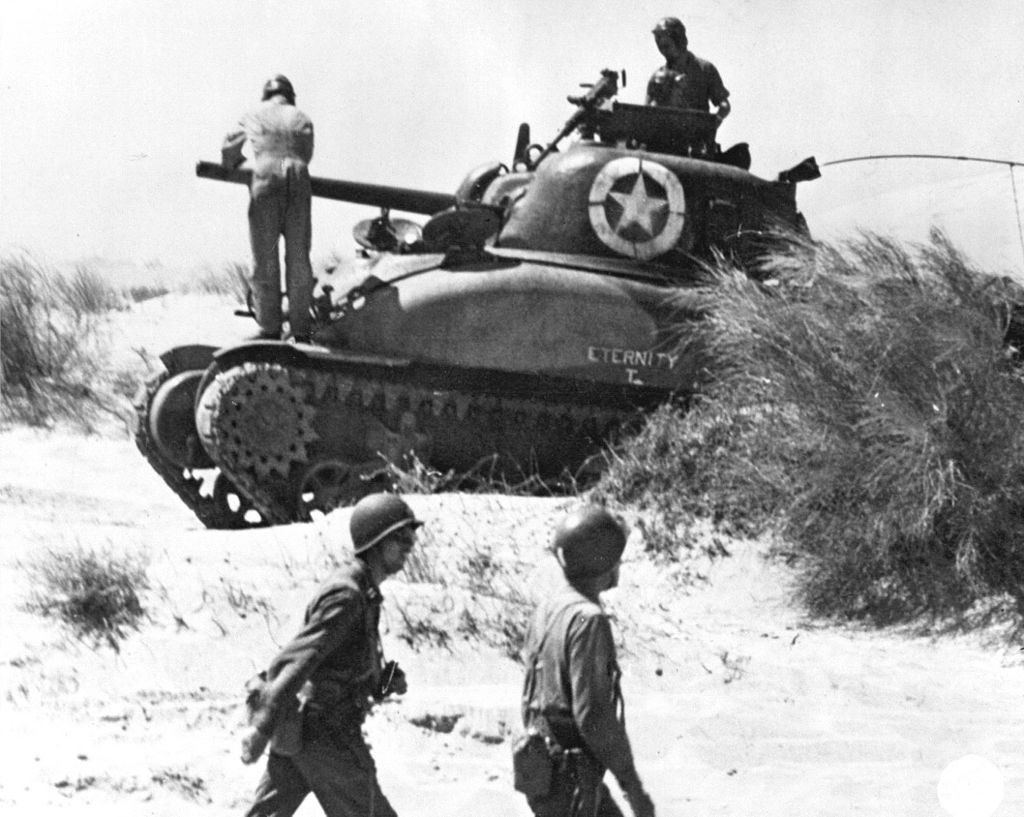 |
| A US crew checks their Sherman tank after landing at Red Beach 2, Sicily on 10 July |
The supporting German and Italian forces held in reserve now swung into action, advancing on the beach at Gela. An Italian counter attack was the first to arrive: infantry of the Livorno Division support by light tanks pushed hard on the American positions, but were repulsed with many casualties inflicted by the defenders in the town and supporting naval artillery. The Hermann Goering Division arrived by early afternoon with the 15th Panzergrenadiers in company; they attacked the center of the bridgehead with Tiger I’s and Panzer IV tanks and broke through the 1st Division before being repulsed by the combined fire of the cruisers Savannah and Boise as well as 6 destroyers firing a recorded 3,194 shells, devastating the attacking divisions and destroying many vehicles.
Encountering much less resistance during the first day of the landings, the British secured almost all of their objectives by the end of the day. Syracuse, Ragusa and Noto were under British control, while the 7th Army prepared to do battle with strong German and Italian forces to their front, but the allied beachheads had been established and any chance to repel them had been wasted.
Author: Aaron “anglomanii” Lentz
In one of the coming updates we will introduce
the insignia of the 66th Armor Regiment and a "Blondie" decal:
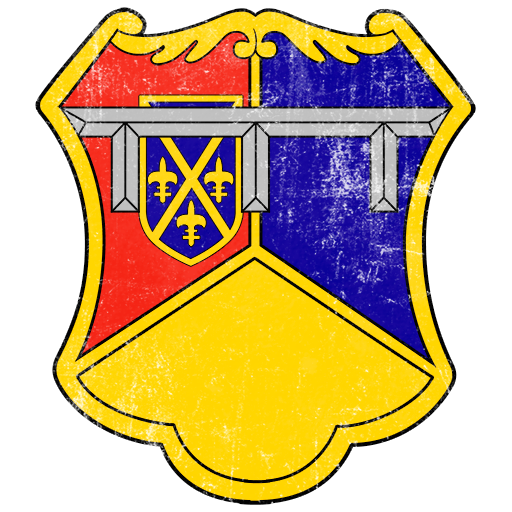 |
 |
Created by Branislav 'InkaL' Mirkov
